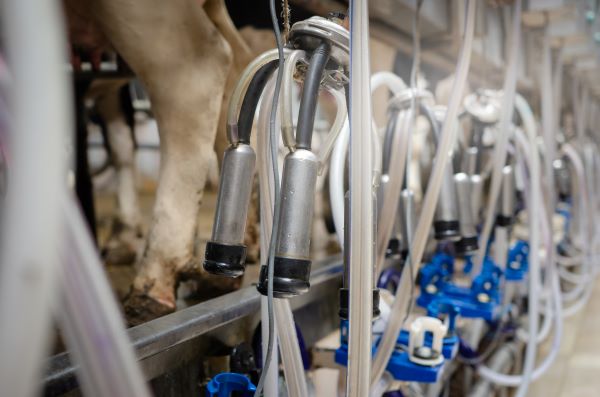December 31, 2024
USDA Issues its Final Decision for Changes to the Federal Milk Marketing Orders
By: Chris Laughton

USDA’s Agricultural Marketing Service (AMS) released its final decision for changes to the Federal Milk Marketing Orders (FMMOs) on November 12. Now producers, and their coops have to vote to approve (or reject) these changes.
With a lot at stake for producers, processors, and consumers of milk and dairy products, obviously these changes are a result of a great deal of negotiation. The final changes are a result of testimony by numerous producers, producer groups, processors, and other stakeholders. The changes are numerous, but the significant ones can be organized in five broad categories:
1. Milk Composition
For FMMOs, USDA formulas assume certain milk composition levels in skim milk. The current assumption is that 100 pounds of skim milk (cwt.) contains 3.1 pounds of protein and 5.9 pounds of other solids. However, due to improved farming practices, protein levels have risen since these assumptions were last updated in 2000.
USDA will increase the assumption of protein to 3.3 pounds and of other solids to 6 pounds for a total of 9.3 pounds of nonfat solids, which corresponds to higher Class prices across the board. On average, from 2020-2023, Class I prices would have increased 46 cents/cwt; Class II prices would have increased by 32 cents/cwt; Class III prices would have increased by 57 cents/cwt; and Class IV prices would have increased by 32 cents/cwt. This change more accurately reflects milk’s current composition and market value.
2. Surveyed Commodity Products
FMMO prices are based on surveys of wholesale dairy product prices. Currently, cheddar cheese prices are determined using 40-pound blocks and 500-pound barrels, though the barrel price has become increasingly volatile and less reflective of the broader market.
USDA proposes eliminating 500-pound barrels from the survey, which would stabilize prices and better reflect market realities. If implemented over the past four years, this change would have increased the Class I price by 24 cents/cwt and the Class III price by 53 cents/cwt.
3. Class III & IV Make Allowances
Probably the most discussed changes were those to make allowances. Make allowances account for the manufacturing costs of dairy products such as cheese and powder, including labor, energy and packaging. USDA’s changes include significant increases to make allowances, which reduces the prices farmers receive. USDA recommends the cheese make allowance increase by 5 cents, the butter make allowance increase by 5.4 cents, the nonfat dry milk make allowance increase by 5.9 cents and the dry whey make allowance increase by 6.6 cents. Had these higher values been in place between 2020-2023 they would have reduced Class prices by between 74 cents and 89 cents per hundredweight.
4. Base Class I Skim Milk Price
The Class I skim milk price is currently based on the average of Class III and IV skim prices. However, market volatility revealed flaws in this system, as large discrepancies between these Class prices led to a substantial reduction in the class I price for farmers. USDA recommends reverting to the previous "higher-of" Class III or IV formula, which would have increased Class I prices by 64 cents/cwt over the past four years. This change aligns with dairy farmer priorities.
However, instead of a simple switch back to the easy to understand “higher-of,” USDA recommends the addition of an adjuster for extended shelf life (ESL) milk. The adjuster is calculated as the rolling average of the differences between the higher-of and the average-of the advanced Class III and Class IV skim milk pricing factors over the prior 13 to 36 months. This adjuster, announced 12 months in advance, aims to account for fluid milk cost differences but introduces significant complexity and may not effectively stabilize ESL milk prices.
5. Class I Differentials
Class I differentials account for the cost of transporting milk to fluid markets and have not been comprehensively updated since 1998. USDA proposes increasing differentials across most regions, with the largest increases in the Southeast and Appalachian orders. The average increase would be $1.25/cwt, with some regions seeing as much as a $2.60 increase. For FMMO one, which covers much of the Northeast, the average increase is about $2.00/cwt.
Conclusion
One of the key elements of the FMMO system is its pooling mechanism, which ensures that farmers receive a uniform price for their milk, regardless of what it is used for. The intention is to ensure handlers in a similar location who produce similar products pay the same minimum classified price for the raw milk and that farmers producing milk in the same area receive the same price (i.e., uniform pricing). Each month, the total Class values of milk within an order are aggregated, and an average uniform price is calculated. The contributions of different Class prices to the pool can vary significantly depending on the supply and demand conditions within an order. Consequently, the effects of adjustments to Class price formulas on individual orders are best understood once differences in Class utilization and production volumes are accounted for.
The proposed increases in make allowances have significant negative impacts to order pool values, ranging from a pool value impact of -$20 million in the Florida order to -$223 million in the Upper Midwest order. For the Northeast order, the increased make allowances are estimated to have a -$216 million annual impact to the pool value. However, all other adjustments mentioned above will positively impact pool values, and, for the Northeast, should outweigh the impact of make allowance increases. When both the positive and negative impacts are accounted for, the reforms will have an estimated annual impact of +$67 million.
Thanks to Daniel Munch at the American Farm Bureau Federation, for providing much of this analysis.




